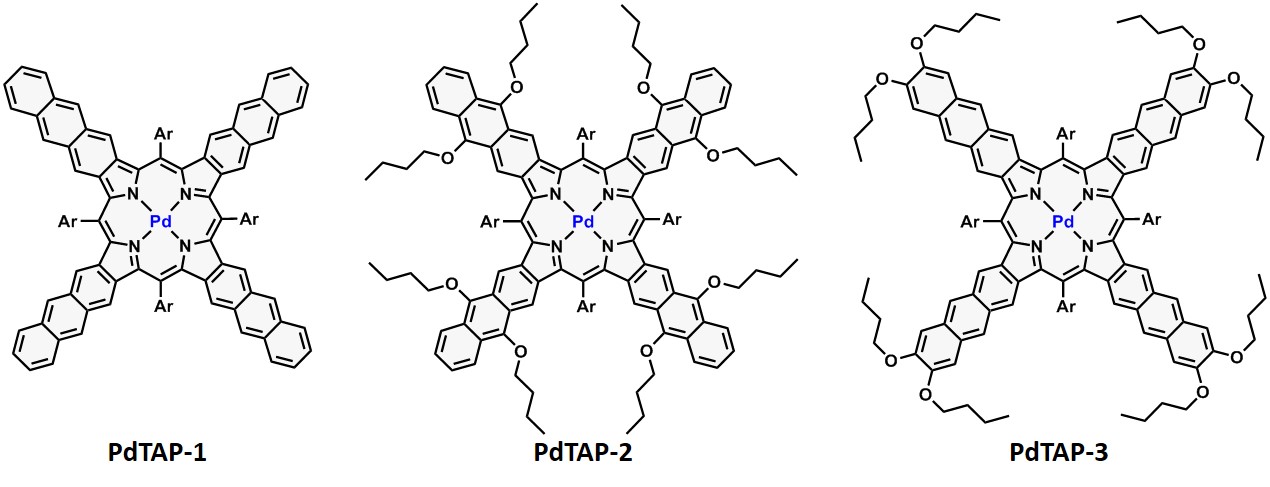Research
Palladium and platinum complexes of tetraaryltetraanthraporphyrins developed by us enable the energetically-conjoined TTA-UC process with rubrene as an emitter, when excited with NIR light (800 nm), at ultralow light intensity of <100 mWcm-2.
 Structures of palladium(II) tetraanthraporphyrin sensitizers. |
TAP sensitizers are able of TTET to a single emitter species (rubrene). A mixture of sensitizers with various absorption maxima was used by us so that to expand the total width of the excitation spectra for upconversion.
Adjustment of the concentration of PdTAPs 1-3 in the mixture to a ratio, corresponding to the investigated optimal conditions, delivered the system with absorption spanning 720-840 nm region. Broadband excitation in this region with emulated moderately concentrated sunlight (integral intensity ~ 50 mWcm-2) resulted in efficient (>3 % Q.Y.) upconversion emission. Functioning UC-devices prepared and sealed in argon-filled glove-box is shown in figure below. Using viscous organic solvent, instead of volatile one, ensured long lifetime of the UC-device. Such devices were found to operate in a stable manner, without noticeable performance degradation, for several months even if placed under water.
 Images of UC device based on PdTAPs and rubrene emitter, irradiated with 806 nm diode laser and emitting yellow light (left). The same device placed under water (right). |
